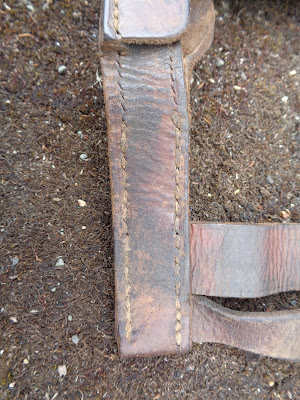My daughter and son in law, picked up a wonderful little avalanche snow shovel at a local garage sale, and gave it to me for Father's Day. Great Gift!
The funny thing about this, is that I have been watching and researching, these very shovels, but hadn't picked one up yet. Now the search is over, and another "empty spot" has been filled in the bunker.
This shovel was made by Witco A.S, of Norway. It is marked as "MADE IN NORWAY", in both english and french.
The Witco company is named after the inventor of the Rottefella ski bindings, Bror With, (WIT-h CO-mpany: WITCO ). Later, WITCO became Roteffella, still based in Norway, and the shovel production that started with WITCO, continued with Rottefella, with only the name changed on the shovel.
Here is the link to the biography page of Bror With:
https://en.wikipedia.org/wiki/Bror_With
Here is a link to the Rottefella Company "About Us" page:
https://rottefella.com/about-rottefella
The WITCO avalanche snow shovel was based, very closely, on the original Swiss Military avalanche shovel made during WW2. The Swiss version was flatter, and the blade parts were spot welded, and not riveted, like the WITCO version. Originally the WITCO shovel had a straight handle, and then later, a plastic T-Handle was added.
The WITCO shovel was first sold in 1979, and a short write-up appeared in Backpacker Magazine, Oct-Nov 1979, on page 73, at the time.
From what I can tell, these shovels were manufactured and sold from 1979, to some time in the early 2000's. The earliest versions had the straight wood handle and were marked WITCO. The middle versions were marked WITCO with a T-handle, and the last versions were marked Rottefella, with a T-handle.
The red bladed shovels were marketed to civilians, and a natural silver bladed version, with a grey or light green T-handle, was sold to the Norwegian Army and the British Army. You can still find these silver military versions for sale as surplus British or Norwegian military. The military shovels are marked the same as the civilian red shovels, only the colors are different. Since the British used the WITCO shovels, it is very probable that they were also used by the various British Antarctic Expeditions as well (quite possibly the red version).
The WITCO T-handle shovels have a removable handle.
The handle is held in place by a sliding shank-ring. The handle is released by sliding the ring down and then pulling the handle out.
There is an indexing screw in the wood handle that fits into a notch on the blade shank to make sure the T handle is positioned correctly, and to prevent the handle from rotating.
I currently have three different avalanche shovels in the collection, this new WITCO, a WW2 Swiss shovel, and a French shovel. You can read about the Swiss and French shovels here, on these blog pages:
https://sharky-fourbees.blogspot.com/2015/11/swiss-army-alpine-snow-shovel-1939.html
https://sharky-fourbees.blogspot.com/2018/07/french-alpine-snow-shovel-circa-1950s.html
Before we get started with the photo album of this new WITCO, let's take a quick look at the three versions of snow shovels that I have in the collection.
 |
| WITCO, Swiss, French |
 |
| WITCO, Swiss, French |
 |
| WITCO, Swiss, French |
 |
| WITCO, Swiss |




















































